Mystery Of Ancient Metal Clamps – Advanced Lost Technology Modern Science Still Cannot Explain
Ellen Lloyd - AncientPages.com - Ancient metal clamps discovered on megaliths, temples, and other prehistoric monuments worldwide are one of the greatest unsolved ancient mysteries of all time.
Why would the builders use or need a small metal clamp to hold large stone blocks in place?
How did this technology spread to ancient Egypt, Pre-Columbian Peru, and Cambodia thousands of years ago?
These countries are separated by thousands of miles. Who taught our ancestors how to use this technology?
The use of metal clamps in T-Grooves has been discovered in Tiahuanaco, Ollantaytambo, Koricancha, and the site of Yuroc Rumi, Vilcabamba. These clamps were also used on the Parthenon, on buildings in Mesopotamia, Egypt, and Cambodia.

Some scientists have suggested the clamps were for ceremonial use. Other researchers point out that ancient metal clamps served for keeping the blocks together, so they would harden out in the right position.
Several imprints show that metal clamps intended to join huge blocks of stone that our modern machines cannot lift.

Credit: MessageToEagle.com
Unfortunately, very few of the clamps have survived. The Spanish removed many clamps, thinking they might be gold. Some may indeed have been decorated with silver and gold, because it's well-documented that armies set about demolishing these structures, just for the clamps.
The clamps from Pre-Columbian South America that have been examined show them to be made of a very unusual alloy - 2.05% arsenic, 95.15% copper, 0.26% iron, 0.84% silicon and 1.70% nickel.

This composition is particularly interesting because there is no source nickel anywhere in Bolivia. At first, archaeologists believed that clamps were brought to these grooves to be placed, but recent scans have revealed that metal was poured into these indentations, which means the builders had portable smelters.

The metals used could only be melted at very high temperatures; temperatures the ancients (to our knowledge) were not capable of. The rare alloy of nickel-bronze-arsenic requires extremely high temperatures.
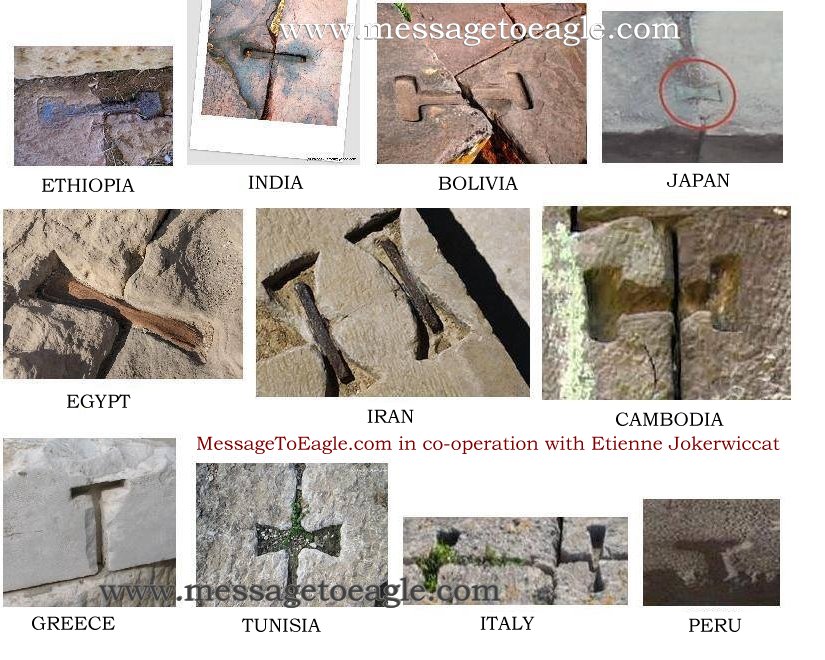
The Puma Punka brackets holes, when analyzed, showed platinum, a metal that only melts at 1753 C and aluminum, which supposedly was not discovered and produced in quantity until the 19th century.

See also:
10 Remarkable Similarities Between Ancient Civilizations
Obviously our ancestors had access to very advanced technology that became lost in the immediate centuries afterward, a technology and means modern science still cannot explain.
NOTE: This article was originally published on MessageToEagle.com would like to express gratitude to Etienne Jokerwiccat for sharing excellent research and photos with us. On behalf of the entire site and all its readers - thank you, Etienne!
Written by Ellen Lloyd - AncientPages.com - MessageToEagle.com
Copyright © AncientPages.com. All rights reserved. This material may not be published, broadcast, rewritten or redistributed in whole or part without the express written permission of AncientPages.com
More From Ancient Pages
-
 Catastrophic Final Flooding Of Doggerland By The Storegga Tsunami – New Study Results
Archaeology | Dec 2, 2020
Catastrophic Final Flooding Of Doggerland By The Storegga Tsunami – New Study Results
Archaeology | Dec 2, 2020 -
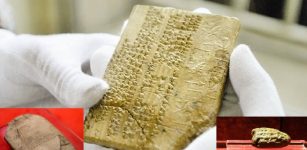 Priceless Cuneiform Clay Tablets Of The Achaemenid Empire On Display At Qazvin Museum
Artifacts | Jul 24, 2020
Priceless Cuneiform Clay Tablets Of The Achaemenid Empire On Display At Qazvin Museum
Artifacts | Jul 24, 2020 -
 Did The Inca Use The Quipu To Collect Taxes?
Archaeology | Jun 24, 2019
Did The Inca Use The Quipu To Collect Taxes?
Archaeology | Jun 24, 2019 -
 Hopi’s Encounter With Maasaw – The Skeleton Man And His Gift Of Sacred Knowledge
Myths & Legends | May 5, 2017
Hopi’s Encounter With Maasaw – The Skeleton Man And His Gift Of Sacred Knowledge
Myths & Legends | May 5, 2017 -
 2,000-Year-Old Huge Terracotta Jar Discovered In Turkey
Archaeology | Jan 2, 2018
2,000-Year-Old Huge Terracotta Jar Discovered In Turkey
Archaeology | Jan 2, 2018 -
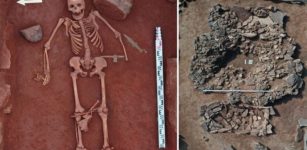 2,500-Year-Old Large Untouched Scythian Burial Ground Unearthed In Khakassia, Siberia
Archaeology | Oct 6, 2020
2,500-Year-Old Large Untouched Scythian Burial Ground Unearthed In Khakassia, Siberia
Archaeology | Oct 6, 2020 -
 Mysterious Grave Of King Valdemar IV Atterdag – Will The 600-Year-Old Historical Puzzle Ever Be Solved?
Featured Stories | Jul 14, 2018
Mysterious Grave Of King Valdemar IV Atterdag – Will The 600-Year-Old Historical Puzzle Ever Be Solved?
Featured Stories | Jul 14, 2018 -
 Strange Ancient And Medieval Encounters With Unusual Beings Reported And Documented
Featured Stories | Jan 15, 2024
Strange Ancient And Medieval Encounters With Unusual Beings Reported And Documented
Featured Stories | Jan 15, 2024 -
 King Ferdinand’s Secret Code Deciphered After 500 Years
Archaeology | Feb 14, 2018
King Ferdinand’s Secret Code Deciphered After 500 Years
Archaeology | Feb 14, 2018 -
 Mystery Of The Mandala: The Circle Of Life
Ancient Symbols | Jul 7, 2018
Mystery Of The Mandala: The Circle Of Life
Ancient Symbols | Jul 7, 2018 -
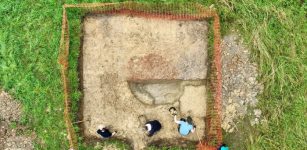 Mystery Of The Roman Tile Kiln At Brandiers Farm Solved!
Archaeology | Aug 18, 2023
Mystery Of The Roman Tile Kiln At Brandiers Farm Solved!
Archaeology | Aug 18, 2023 -
 ChatGPT Is Confronting, But Humans Have Always Adapted To New Technology – Ask The Mesopotamians, Who Invented Writing
Featured Stories | Feb 13, 2023
ChatGPT Is Confronting, But Humans Have Always Adapted To New Technology – Ask The Mesopotamians, Who Invented Writing
Featured Stories | Feb 13, 2023 -
 Beautiful And Unique Ancient Roman Hoard Discovered In UK
Archaeology | Oct 3, 2017
Beautiful And Unique Ancient Roman Hoard Discovered In UK
Archaeology | Oct 3, 2017 -
 Unexplained Encounters With Unknown Beings In California – Old And Modern Reports
Featured Stories | Mar 11, 2024
Unexplained Encounters With Unknown Beings In California – Old And Modern Reports
Featured Stories | Mar 11, 2024 -
 Bacho Kiro Cave: Genomes Of The Earliest Europeans – Sequenced
Archaeology | Apr 8, 2021
Bacho Kiro Cave: Genomes Of The Earliest Europeans – Sequenced
Archaeology | Apr 8, 2021 -
 Rare 1,000-Year-Old Viking Wooden Bowl Found By Young Boy
Archaeology | Oct 24, 2022
Rare 1,000-Year-Old Viking Wooden Bowl Found By Young Boy
Archaeology | Oct 24, 2022 -
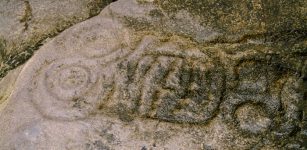 Prehistoric Temperatures Of North America’s Oldest Archaeological Sites Shed New Light On Ancient Human Migration
Archaeology | Apr 3, 2023
Prehistoric Temperatures Of North America’s Oldest Archaeological Sites Shed New Light On Ancient Human Migration
Archaeology | Apr 3, 2023 -
 Golosov Ravine – Mysterious Time-Warping Mist Causing Unexplained Disappearances And The Ancient Shrine Of God Veles
Featured Stories | Jul 3, 2021
Golosov Ravine – Mysterious Time-Warping Mist Causing Unexplained Disappearances And The Ancient Shrine Of God Veles
Featured Stories | Jul 3, 2021 -
 5 Most Common Misunderstandings About Evolution
Evolution | Jun 5, 2023
5 Most Common Misunderstandings About Evolution
Evolution | Jun 5, 2023 -
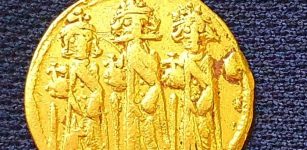 Rare Ancient Gold Coin Depicting Emperor Heraclius And Hill Of Golgotha Discovered In Israel
Archaeology | Aug 25, 2021
Rare Ancient Gold Coin Depicting Emperor Heraclius And Hill Of Golgotha Discovered In Israel
Archaeology | Aug 25, 2021
